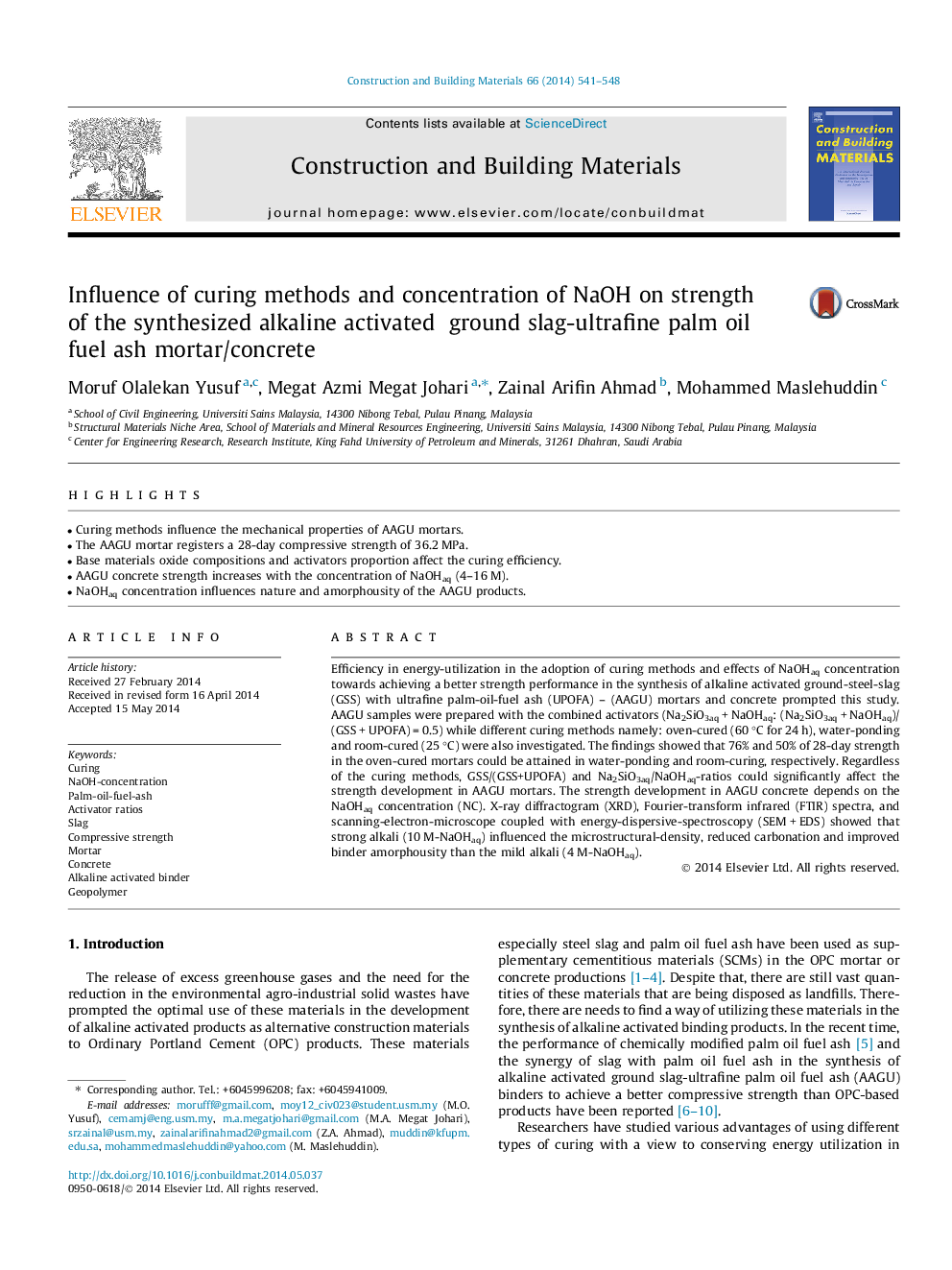| Article ID | Journal | Published Year | Pages | File Type |
|---|---|---|---|---|
| 6722931 | Construction and Building Materials | 2014 | 8 Pages |
Abstract
Efficiency in energy-utilization in the adoption of curing methods and effects of NaOHaq concentration towards achieving a better strength performance in the synthesis of alkaline activated ground-steel-slag (GSS) with ultrafine palm-oil-fuel ash (UPOFA) - (AAGU) mortars and concrete prompted this study. AAGU samples were prepared with the combined activators (Na2SiO3aq + NaOHaq: (Na2SiO3aq + NaOHaq)/(GSS + UPOFA) = 0.5) while different curing methods namely: oven-cured (60 °C for 24 h), water-ponding and room-cured (25 °C) were also investigated. The findings showed that 76% and 50% of 28-day strength in the oven-cured mortars could be attained in water-ponding and room-curing, respectively. Regardless of the curing methods, GSS/(GSS+UPOFA) and Na2SiO3aq/NaOHaq-ratios could significantly affect the strength development in AAGU mortars. The strength development in AAGU concrete depends on the NaOHaq concentration (NC). X-ray diffractogram (XRD), Fourier-transform infrared (FTIR) spectra, and scanning-electron-microscope coupled with energy-dispersive-spectroscopy (SEM + EDS) showed that strong alkali (10 M-NaOHaq) influenced the microstructural-density, reduced carbonation and improved binder amorphousity than the mild alkali (4 M-NaOHaq).
Related Topics
Physical Sciences and Engineering
Engineering
Civil and Structural Engineering
Authors
Moruf Olalekan Yusuf, Megat Azmi Megat Johari, Zainal Arifin Ahmad, Mohammed Maslehuddin,
